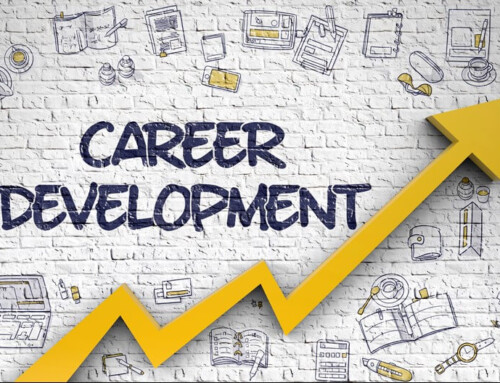Star performers are powerful, which is why high achievers are so valuable. They energize teams, inspire ambition, and deliver outcomes that leaders notice. One study found that an employee in the top 1% of performance can generate over $5,300 in additional value compared to the average worker (1). These high-performing individuals have the potential to drive innovation, expand revenue, and sharpen competitive advantage.
But here’s the problem: some stars burn bright—but scorch the team in the process. These destructive high performers are termed dysfunctional superstars. They produce results, yes—but they drain morale, erode trust, and fracture collaboration. Despite their contributions, the critical question for any leader becomes: Can your organization afford to keep them?
HEALTHY STAR VS. DYSFUNCTIONAL SUPERSTAR
Consider two high performers:
- Sophia, whose insights exceed expectations. She shares knowledge willingly, mentors junior staff, and views collaboration as part of success. Her results are impressive and multiplied by her positive influence.
- Marcus, who delivers big wins. However, he hoards his knowledge, belittles others during meetings, and frequently requests exceptions. His performance makes headlines, but his team’s turnover is double the company average.
Both are top performers—but only one, Sophia, strengthens the company culture.
Studies highlight the performance gap among average-performing employees. One toxic employee can reduce team productivity by 30–40% (2). But, replacing a corrosive worker can yield $12,500 in value—more than twice the gain from hiring a high-performing individual (3).
These studies demonstrate that even if an employee outperforms others, their behaviors, attitude, and habits have a significant impact on the entire organization.
ARCHETYPES OF DYSFUNCTIONAL SUPERSTARS
So, how do you identify a dysfunctional superstar? Look for common archetypes such as:
- The Lone Wolf Performer – Achieves remarkable results solo, avoids collaboration, isolates the team.
- The Critical Genius – Brilliant technically but dismissive or divisive, fostering fear rather than innovation.
- The Untouchable Star – Thinks results exempt them from rules, courtesy, or accountability.
- The Credit Collector – Takes credit for others’ work, eroding trust.
- The Subtle Saboteur – Undermines through gossip, manipulation, and subtle sabotage.
FICTIONAL ILLUSTRATIONS OF DYSFUNCTIONAL SUPERSTARS
These vivid characters make real-life patterns easier to recognize—and harder to ignore.
| Character | Strengths | Archetype | Toxic Behaviors | Impact on Others |
| Sherlock Holmes (Doyle) | Brilliant deduction | Critical Genius | Arrogance, dismisses feelings | Alienates peers, stalls collaboration |
| Dr. Gregory House (House) |
Superior diagnostics | Critical Genius | Sarcasm, emotional manipulation | Creates a hostile climate |
| Jordan Belfort (Wolf Street) | Persuasive salesmanship | Untouchable Star | Rule-breaking, entitlement | Fosters an unethical, toxic culture |
| Harvey Specter (Suits) | Master litigator | Lone Wolf Performer | Win-at-all-costs mindset | Undermines teamwork, isolates colleagues |
| Blake (Glengarry) |
Sales dominance | Critical Genius | Ridicule, fear tactics | Demoralizes team, drives disengagement |
| Pete Campbell (Mad Men) | Ambitious account wins | Credit Collector | Claims others’ contributions | Breeds resentment and distrust |
| Cersei Lannister (Game of Thrones) | Political savvy, strategic mind | Subtle Saboteur | Gossip, manipulation | Erodes alliances, breeds distrust |
WHY CULTURE MATTERS MORE THAN NUMBERS
Mental Health at Work
Toxicity isn’t just performance-decaying—it’s soul-crushing. The U.S. Surgeon General reports that 84% of workers say job conditions affect their mental health, with over 70% reporting symptoms tied to stress (5). Allowing harmful attitudes and behaviors into the workplace can lead to burnout and jeopardize employee retention.
Internal and External Customer Churn
When employees disengage, service suffers. Malignant environments spur both internal turnover and external churn. While specific numbers vary, research repeatedly links dysfunctional cultures with declining customer loyalty (4).
Accountability Gaps
Toxic behavior spreads when leaders don’t act. Research shows that a lack of accountability structures directly fuels workplace toxicity, especially when dysfunctional high performers are given a free pass (6).
WHY DOES DYSFUNCTION HAPPEN IN THE WORKPLACE
A Focus on Hard Skills Over Culture
Organizations often prioritize measurable outcomes—sales, efficiency, deadlines—over softer aspects like communication and collaboration. This imbalance allows toxic behavior to hide behind hard numbers.
Deflection Through Brilliance
Dysfunctional stars often use their exceptional outcomes as shields. Their hard skill performance deflects scrutiny—even when they’re causing damage.
Pressure and Escalation of Destructive Habits
High-pressure environments tend to exacerbate destructive behaviors, including isolation, manipulation, and sabotage. Under stress, these habits become more frequent and more tolerated.
Diffusion of Responsibility and Blame Culture
When accountability is vague, blame spreads, silos rise, and unhealthy norms flourish (7)(8)(9).
A LEADER’S PLAYBOOK TO HEALTHY AND HIGH-PERFORMING STARS
Hire for Culture—and Competence
Ask about conflict resolution, collaboration, and recognition of others during employment interviews. Look for empathy, high emotional intelligence, and self-awareness, not just confidence.
Define Both What and How
Clarify not just results, but behavior expectations. Reinforce that how goals are achieved matters as much as the goals themselves.
Build Real Psychological Safety
Invite questions. Reward candor. Make it clear that pointing out problems is not only safe but also expected.
Reward Growth and Team Impact
Recognition should extend beyond metrics. Celebrate mentorship, humility, collaboration, and behaviors that build collective strength. This philosophy multiplies positive outcomes across teams and the organization.
Use PIPs as Growth Maps
Performance Improvement Plans (PIPs) are most effective when they’re framed as development journeys rather than as a punishment or a threat. Pair them with training, coaching, and clarity.
Act When It Matters
When behavior persists despite support, leaders must choose culture over performance. Termination can be the healthiest path—for both the dysfunctional superstar and the organization.
THE REAL MEASURE OF SUCCESS
It’s no secret that your business depends on brilliant, healthy stars to grow. High performers are the fuel that powers collective achievement, multiplying success across the organization.
A healthy star like Sophia doesn’t just deliver results. She elevates everyone around her. She builds trust, sparks collaboration, and strengthens resilience across teams.
The opposite is also true. Dysfunctional superstars may produce impressive numbers, but their destructive habits erode long-term value. Behind the surface of strong results, they leave a trail of hidden costs: lost productivity, high turnover, customer attrition, and stalled innovation. These are not performers your organization can afford to keep.
Sustainable success isn’t built on one shining individual. It comes from the constellation they help form—where stars align, amplify one another, and create enduring impact.
Are you in the process of setting up a non-cash incentive program to reward your healthy stars? Connect with Gavel International for more information about our travel incentive programs.
______________
SOURCES
1 https://hbswk.hbs.edu/item/researchers-discover-value-of-a-good-star-employee-but-the-damage-of-a-toxic-worker
2 https://mitsloan.mit.edu/ideas-made-to-matter/toxic-culture-is-biggest-predictor-attrition-great-resignation
3 https://www.hbs.edu/ris/Publication%20Files/16-057_d45c0b4f-fa19-49de-8f1b-4b12fe054fea.pdf
4 https://www.shrm.org/content/dam/en/shrm/research/SHRM-Culture-Report_2019.pdf
5 https://www.hhs.gov/surgeongeneral/reports-and-publications/workplace-well-being/index.html
6 https://www.researchgate.net/publication/390126461_Workplace_Challenges_and_Leadership_Issues_A_Research_Analysis_on_Toxic_Leadership
7 https://www.linkedin.com/pulse/blame-kills-accountability-how-foster-culture-growth-paul-stevens-itiof/
8 https://www.engage-hr.com/blog-1-1/what-symptoms-arise-from-lack-of-accountability
9 https://plaky.com/blog/dangers-of-working-in-silos
- Can Your Organization Afford a Dysfunctional Superstar? - October 6, 2025
- Take Action on Organizational Values to Improve Company Culture - September 8, 2025
- Discover Hidden Gems in the Art, Culture and Outdoor Attractions in Dallas, Texas - August 25, 2025






